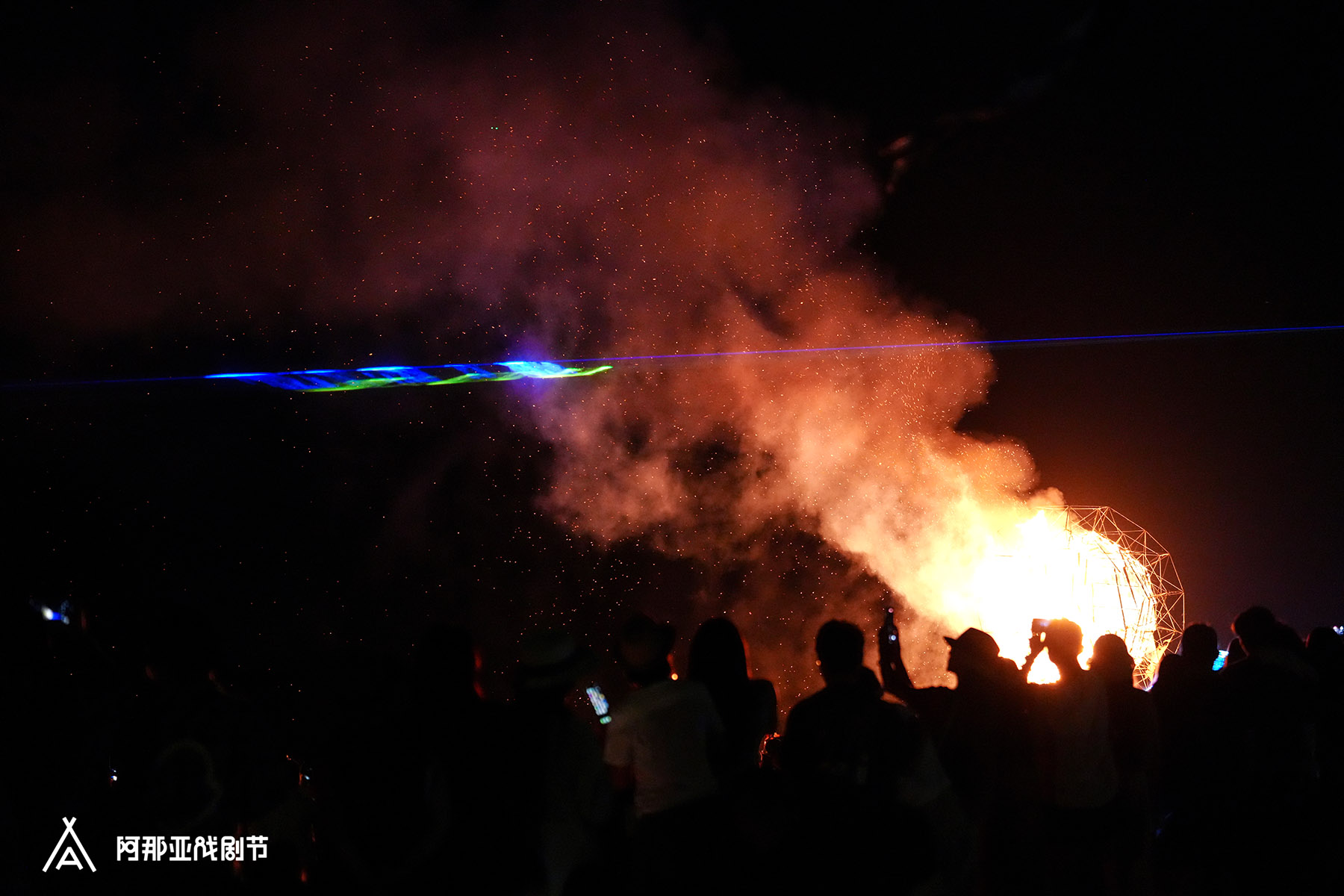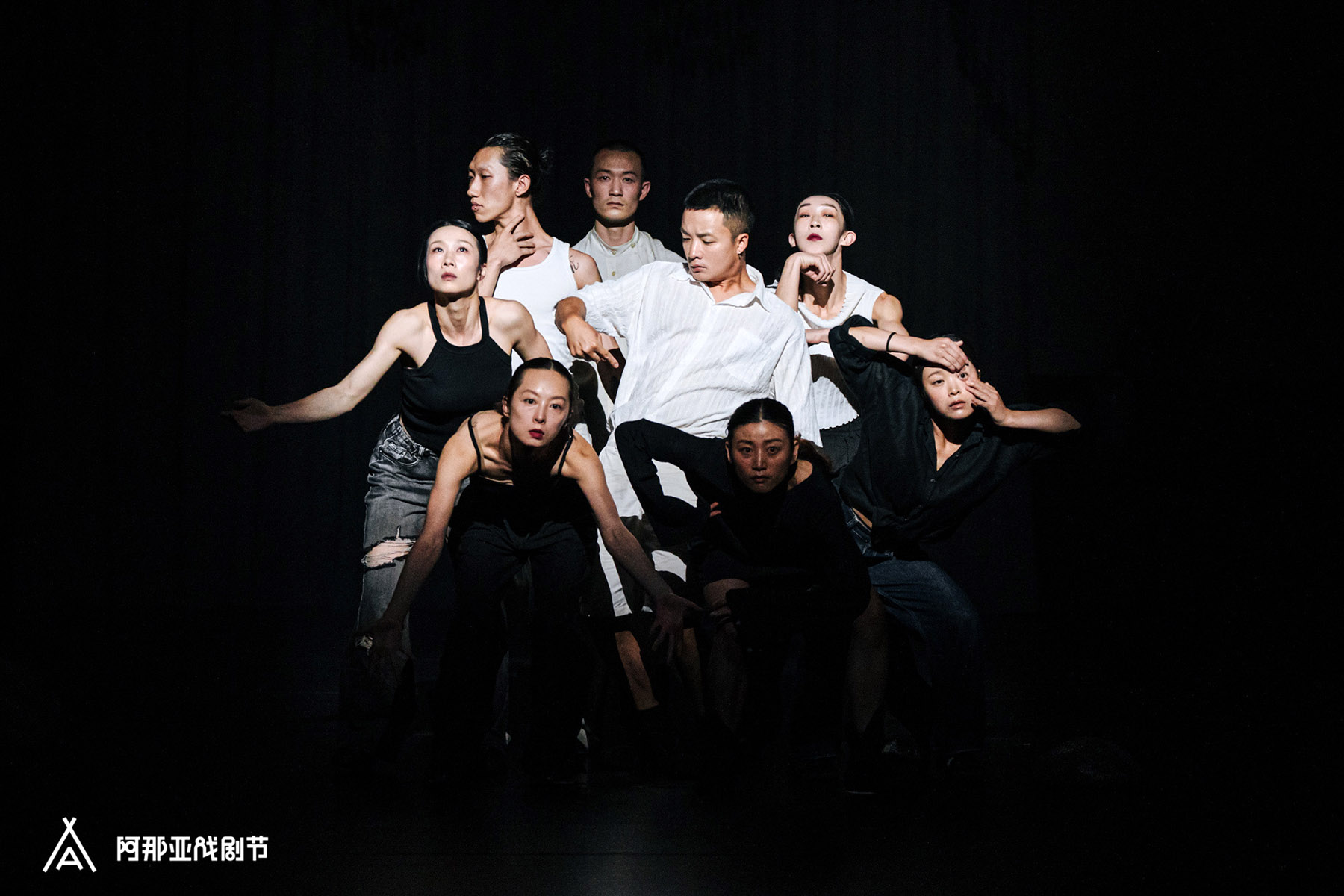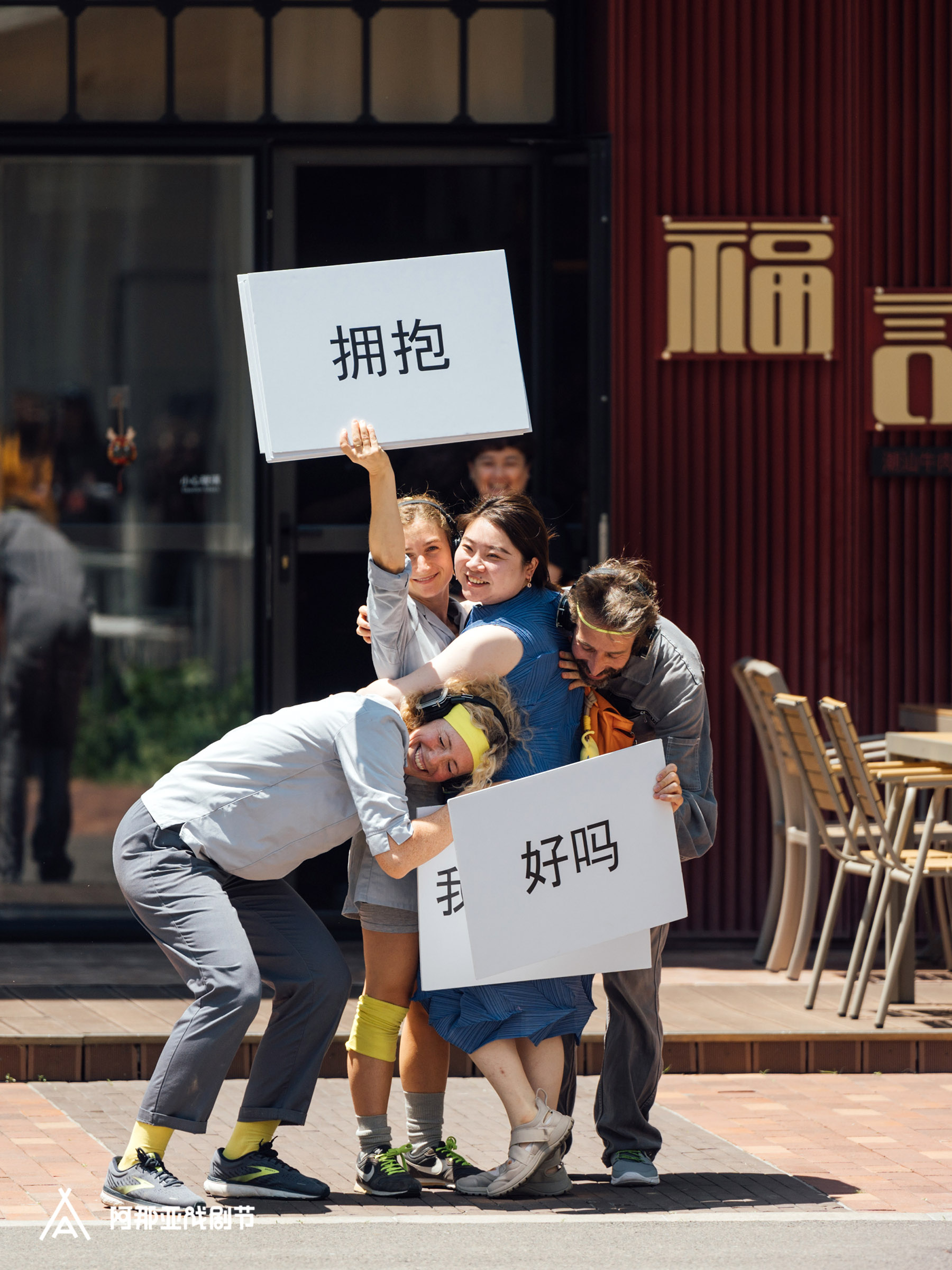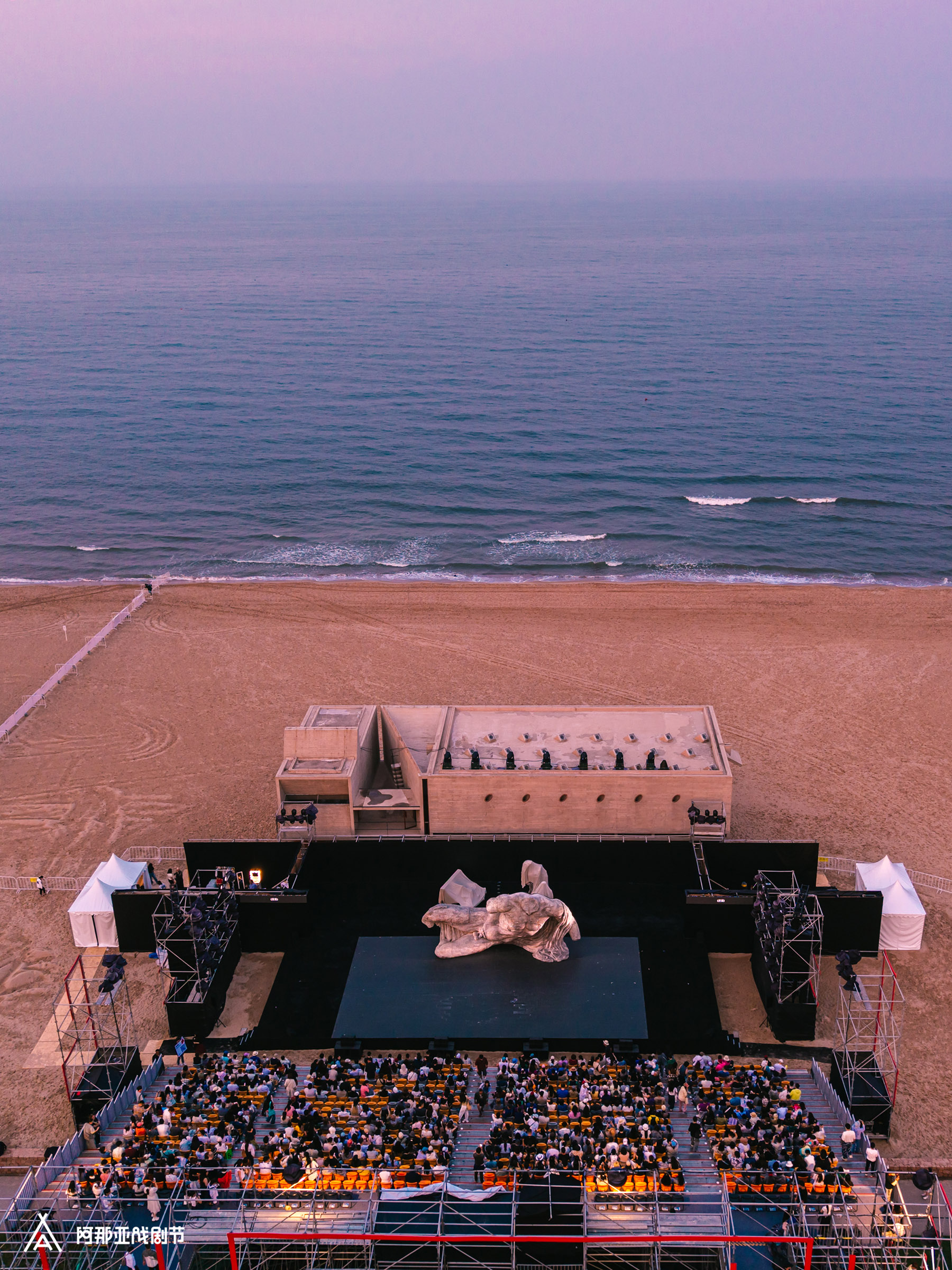Visitors flock to seaside community for 11 days of art and performances, Cheng Yuezhu reports in Qinhuangdao, Hebei.

The seaside Aranya community in Qinhuangdao, Hebei province, has been a popular retreat since its founding. A library, a community hall and an art museum, all featuring minimalistic architectural styles and restrained aesthetics, align a strip of beach.
The inaugural Aranya Theater Festival in 2021 kicked off an annual 10-day some summer celebration, which sees the tranquil seaside town take on a striking new look. From June 19 to 29 this year, the streets were dotted by dramatic installations and floats, avant-garde theater productions from around the world, and diverse activities.
This year's festival parade featured 14 futuristic floats presenting artists' works, performers of different genres, and countless visitors. As the procession reached its destination, a massive bonfire installation inspired by Indian literary giant Rabindranath Tagore's Stray Birds was lit, with the crowd singing along to music.
READ MORE: Friends use festival to stage theater dreams
Audience members gathered at 3 am with the beach still enveloped by darkness to watch director Chen Minghao's Eurydice and Sea. After the play, they ate dough sticks for breakfast, deep-fried by the director, and stepped out of the theater just in time to catch the first rays of sunrise.
Those who walked the streets of the Aranya community were in for a surprise when they arrived at the crossroads behind the Theater Dionysus — several rows of spectators were seated wearing headphones and facing the junction.
[The Frame], the only outdoor invited production at this year's festival, is also its first street theater production in its five-year history.
Created and performed by Electrico 28, comprising artists from Austria and Spain, the production is an elaborate observation, or even dissection, of human activities on an ordinary street or square.

Josep Cosials Montolio, one of the creators and performers, says that before work started on this production, the troupe already had a tradition of performing in public spaces, with a shared love for the observations of everyday life.
They found inspiration in the book An Attempt at Exhausting a Place in Paris by French author Georges Perec, who sat on a square in Paris for three days and made notes of everything he observed.
"In this entertainment society, people expect many things to be happening. We explored the other way. Yes, mobile phones are interesting, but sometimes it's good to just sit on the street and watch what's going on," Cosials Montolio says.
Performers hold up cardboard signs to pedestrians passing by or people nearby for relaxation and who mill about out of curiosity, with words like "running", "waiting", and "smiling". Sometimes, they point a microphone at passersby to capture the sound of footsteps or the whirring of bicycles, which are transmitted live to the audience's headphones.
There is also the element of connecting with people in the production, he adds. The performers interact with those nearby, asking them what they are doing or how they're feeling. The random responses given by the responders, caught off guard or came prepared, can often incite smiles or laughter among the audience members and onlookers.
"The Chinese audience is super open and curious. They are interested in what's going on," he says.
The troupe has performed this creative project in more than 10 countries since its premiere in 2020, and has adapted the show to the local languages.
Each performance is similar yet unique. The team usually selects a pedestrian zone with audience members seated on a side street that creates visual limits. The audience can view the movements from a certain section of the street as if looking into a frame.

Staged in different countries with different mentalities and knowledge of street theater, the performances elicit various responses.
"Each time we perform, we learn more about the culture, the values, how people work, what they need, and what they like or don't like. We learn how to contribute to creating these little moments in the streets, making them shine a bit — to see each other more clearly," says Ana Redi-Milatovic, another performer.
This year, the theater festival invited 29 productions with a total of 94 performances brought by 40 directors from China and abroad, among which 16 were international shows.
According to theater critic Zhang Zaitu, compared with other major theater festivals in China, the Aranya Theater Festival has gradually developed a distinct style in terms of its program, aesthetics and theater venues.
Held inside a small community, the festival offers a dense, celebratory atmosphere with events such as invited productions, script-reading sessions, panel talks, and screenings taking place just around the corner.
"Visitors can enjoy a high density of performances and information in a short time and fully immerse themselves in art without distractions, as if in a utopia cut off from reality," Zhang says.
An international scope, diversity, and hybridity are among its most notable features, Zhang adds. Not only is the percentage of international productions at a leading level in Chinese theater festivals, but many productions are known for being bold and innovative.
In the dance theater production Strange Tales, dancer and choreographer Yu Erge drew the audience into surreal and nightmarish scenes from Qing Dynasty (1644-1911) novelist Pu Songling's eponymous work.

The book is a collection of nearly 500 fantasy tales with supernatural characters, such as ghosts, fox spirits and divine entities. From the book, Yu and other members of the troupe selected several visually evocative stories and wove them into a dance piece primarily centered on human desire.
"I was interested in the book, especially because it is classic Chinese literature. I'd never merged Chinese culture with contemporary dance before, so I wanted to try something new," she says.
The selected tales are deconstructed and reinterpreted into a nonlinear narrative. On stage, Pu is portrayed as sitting in a chair and slipping into a web of fantasies. As all the stage props are taken away, everything around him disperses at the end of the show.
ALSO READ: Time for a bigger stage
The dance piece retains its contemporary qualities while adopting traditional Chinese aesthetics in terms of movement, stage and sound designs.
For the choreography, Yu explored a physical language that is representative of Chinese expressions yet rooted in contemporary dance. For the music, composer Jiang Weixin fused a range of genres, folk instruments and traditional Chinese opera singing styles.
"In Pu's mind, the ghosts and fox spirits are beautiful. In contrast, it's sometimes the human characters who are more flawed. I wanted to present a version of Strange Tales that speaks to modern audiences, because they aren't just tales of the past; they resonate today," Yu says.
Contact the writer at chengyuezhu@chinadaily.com.cn


